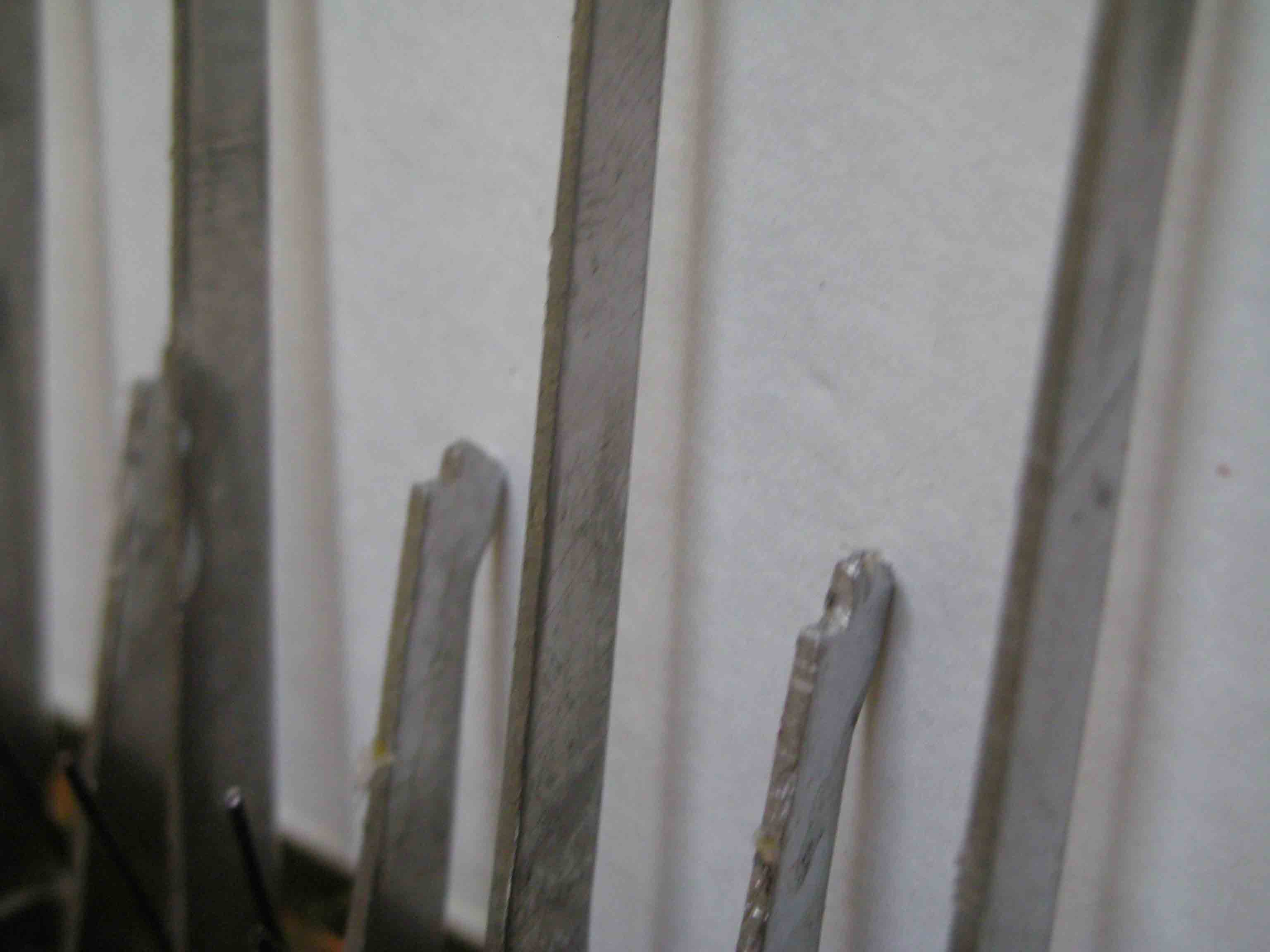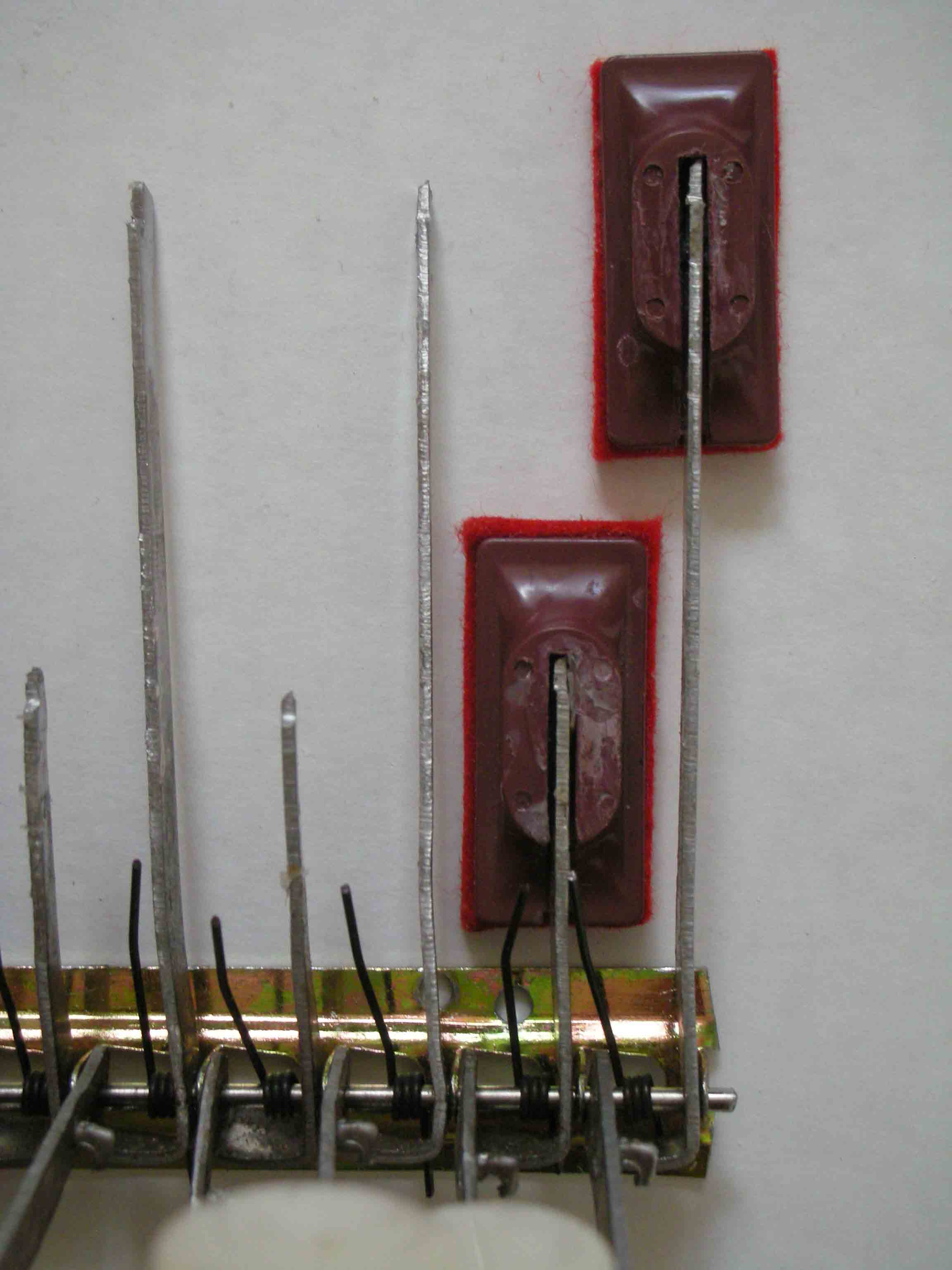Case 1: Key Rod & Palette Position Problems found in
Diatonic Accordions made by
Tianjin Xinghan Musical Instruments, Tianjin, China



| Common Design Defects in Chinese diatonic accordions: Case 1: Key Rod & Palette Position Problems found in Diatonic Accordions made by Tianjin Xinghan Musical Instruments, Tianjin, China |
||||||||||||||||||
| FOR FURTHER INFO ABOUT SOLUTIONS TO THESE PROBLEMS, PLEASE CONTACT: [email protected] | ||||||||||||||||||
 |
LEFT: Photo of Key Rods on a 2-row diatonic accordion made by Xinghan Musical Instruments (Tianjin, China.) The Key Rods have been cut off at the top by approx. 5mm. This is a very common problem in most Chinese accordions, because the workers who design and build these accordions do not understand the physics of reed function. Shortening the rods causes the palettes to be positioned too low, which in turn prevents the palettes from opening adequately. | |||||||||||||||||
 |
||||||||||||||||||
 |
||||||||||||||||||
| ABOVE: Palettes at Correct Distance from Axle. If the key rods had not been cut off at the top, the Palettes would be in this better position. Ideally, the lower edge of the Palettes should be at least 25mm above the horizontal axle. Only then would it be possible for the lower Palettes to open up sufficiently. Unfortunately, in the example above, the rod has been cut so short that the palette cannot be properly attached in the appropriate position. | ||||||||||||||||||
| ABOVE: Palettes at Wrong Distance from Axle. Vertical rods are way, too short, and the bottom edge of the Palette is only about 15mm above the horizontal key rod axle. It is obvious that the lower palette can hardly open because the vertical rod is too short, and the palette is too close to the axle. This is a serious design problem often found in diatonic accordions made by Tianjin Xinghan and other Chinese manufacturers such as Songlin and Hualian, and to a slightly lesser degree in accordions made by European makers such as Weltmeister (E. Germany) and Delicia (Czechoslovakia.) | ||||||||||||||||||